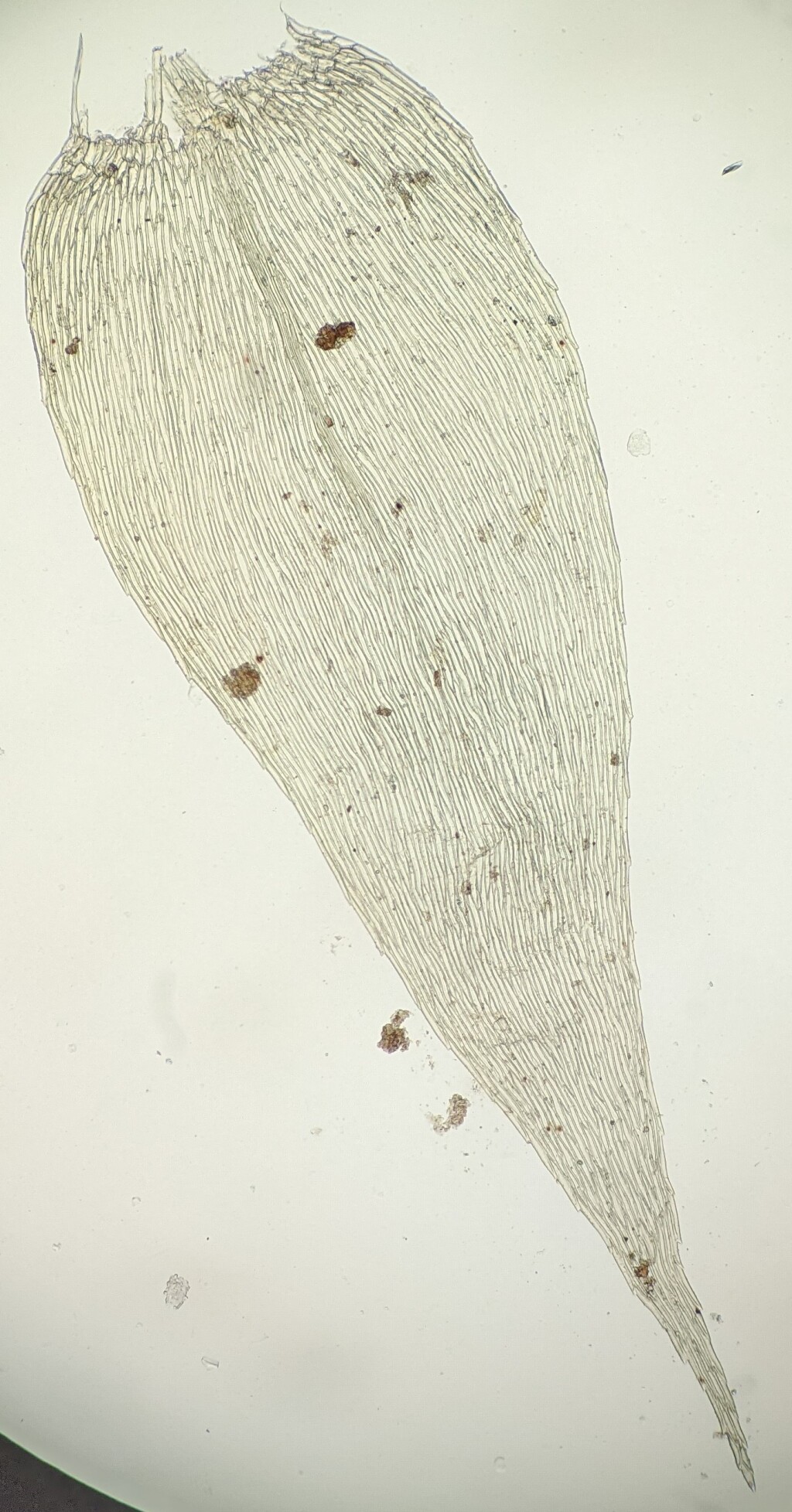Brachythecium rivulare
Schimp.Dioicous or rarely autoicous (not in Victoria). Loose or moderately dense mats on soil, rocks, logs and tree trunks. Stems prostrate to slightly ascending, 30–70 mm long, pinnately or irregularly branched, yellow, with fascicles of brown rhizoids on ventral side of leaf bases, branches to 20 mm long. Stem and branch leaves differentiated; cells linear, 50–168 μm long, 6–11.5 μm wide, smooth; alar cells oblong to short-linear, 20–50 μm long, 15–30 (–35) μm wide, strongly inflated, forming a well-delimited transversely triangular group, extending from margin 40–80% of distance to costa, not ascending up along leaf margins. Stem leaves erecto-patent to patent, slightly more erect when dry, occasionally slightly homomallous, ovate, triangular, cordate or broadly cordate, 1.5–2.5 mm long, 0.8–1.5 mm wide, concave, not to moderately plicate; costae exyending 1/2–2/3 leaf length, rarely ending in abaxial spine; apex acute or shortly acuminate, without a hair-point; margins denticulate, plane, occasionally recurved near base, without a border. Branch leaves spreading when moist, orbicular to triangular, 1.1–1.75 mm long, 0.5–0.9 mm wide; costae often ending in abaxial spine; apex rounded, sometimes apiculate; margins denticulate. Setae 20–25 mm long, mammillose, red-brown. Capsules inclined to horizontal, ovoid, curved, 2–2.5 mm long. Operculum rostrate from conic base, 0.75–0.8 mm long.
EGU, HSF, HNF, OtR, VAlp. In cool-temperate rainforest in the Otways and beside streams in dry-sclerophyll forest or in wet-sclerophyll forest and subalpine woodland along the Great Dividing Range east of Melbourne. Also NSW, ACT and Tas. Eurasia, North America, Chile and Kerguelen Is.
 Spinning
Spinning
